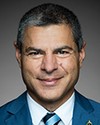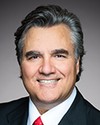Clearly, we are very involved in managing customs, given that the airport provides physical locations for customs. That being the case, we are working together with the Canada Border Services Agency and we have to coordinate what we do. That is what we did following the incident—what happened last year can indeed be described as an incident.
You have to understand that Montreal-Trudeau Airport is extremely busy during the summer. Montreal airport has a European focus. Flights to Europe are concentrated at the end of the day while aircraft returning from Europe almost all arrive at the end of the afternoon. That is the time when the bottleneck causing the wait times tends to occur.
We have met with the people from Canada Border Services Agency in order to set up an action plan for the coming summer. We have established a temporary processing centre, which will become permanent, for passengers in transit. For their part, they have made sure that they are going to have officers on duty at peak times. We also post the wait times.
Despite all those efforts that we are making together, there will still be wait times longer than 30 minutes this summer during that very busy time. That situation, which really is unusual in Montreal, will be particularly acute in August, which is our busiest period of the year.



